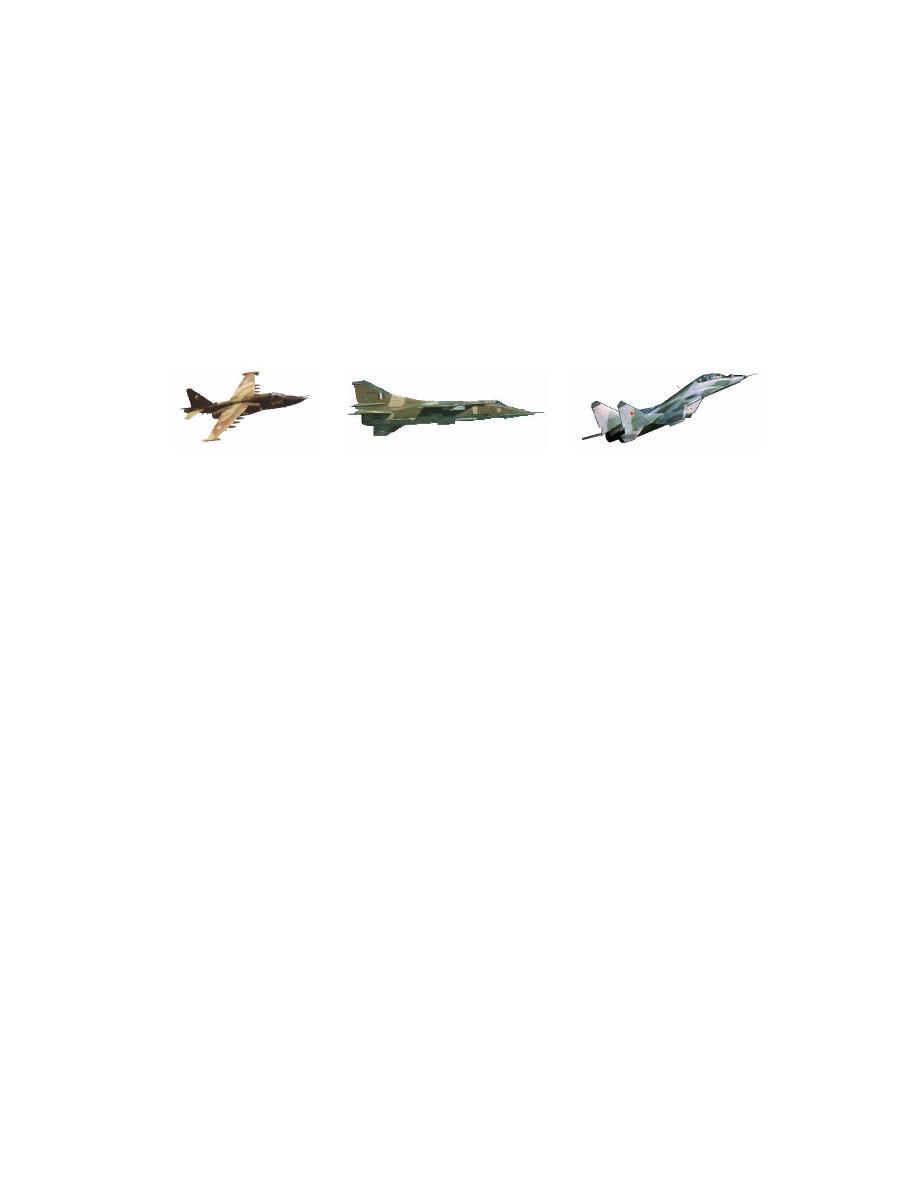
5. Identify Ground Attack Aircraft.
Although theater missile threats have taken the place of FW aircraft as the principal air
threat to ground forces, the following types of FW aircraft may be employed by the enemy against
friendly forces: bombers, fighter-bombers, fighters and close air support aircraft. Any of the FW
family may carry (TASM), while only the larger ones will carry cruise missiles. Improvements to
FW aircraft will include increased survivability and improved fire control accuracy. Examples of
three potentially threat aircraft, the Su-25 Frogfoot, MiG-27 Flogger D and MiG-29 Fulcrum are
shown in figure 6.
Su-25 FROGFOOT
MiG-27 FLOGGER D
MiG-29 FULCRUM
Figure 6. Threat Ground-Attack Aircraft
Ground attack aircraft are effective against preplanned targets. The pilot generally knows the
target location and will carry the correct ordnance for the target. Effectiveness decreases against
targets of opportunity. Pilots must locate their targets, plan their attack, and deliver their ordnance
in a short time. As a result, accuracy and effectiveness are degraded. The use of area type
weapons such as cluster bomb units (CBUs) or FFARs can be expected on the initial attack run,
while cannon and machine gun fire will likely be used in the follow-on attack.
High-performance aircraft, operating in a ground attack role, attack at relatively high speeds.
They normally operate under centralized control and are directed against preplanned targets. These
aircraft target the division and corps rear area where they deliver ordnance selected to optimize
destruction effects on the target. If they have ordnance remaining after completing their primary
mission, the aircraft may be released to attack targets of opportunity on their return flight. The
attack will usually include a high-speed, low-level penetration run to a point near the target area to
avoid low- and medium-altitude air defenses.
6. Recognize Ground-Attack and High-Performance Aircraft Attack Profiles.
a. Pop-up Attack. Upon nearing the target, the aircraft pops up to acquire the target, then
dives to the ordnance release point (Figure 7). Following ordnance release, the pilot pulls up and
executes an escape maneuver, or may execute a reversing maneuver and fire rockets and cannon
while flying back over the target.
9



 Previous Page
Previous Page
